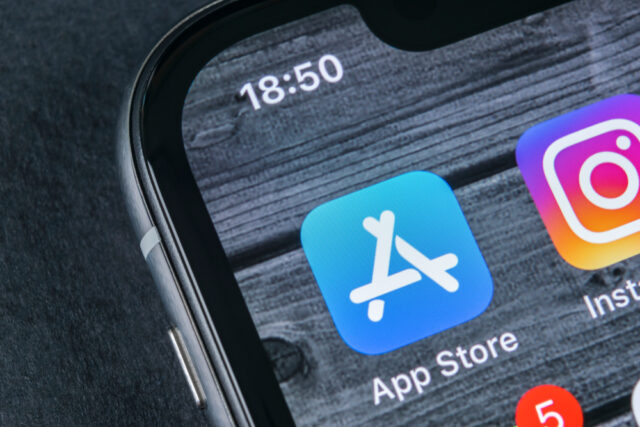In a crowded app marketplace, a well-crafted app description is your ticket to catching potential users’ attention and driving downloads. An effective description not only communicates your app’s features but also engages users emotionally, highlighting the value it brings to their lives. Here are the best practices for writing compelling mobile app descriptions that can boost your app’s visibility and downloads.

1. Understand Your Audience
Overview: Before you start writing, take the time to understand who your target audience is. Knowing their preferences, pain points, and motivations will guide your writing.
Tips:
- User Personas: Create user personas that represent your ideal users. Consider their age, interests, and challenges to tailor your language and tone accordingly.
- Research Competitors: Analyze descriptions of successful apps in your niche to identify common themes and effective phrasing.
2. Craft a Captivating Opening Line
Overview: The first few lines of your app description are crucial as they appear above the fold and determine whether users will continue reading.
Tips:
- Hook the Reader: Start with a strong, engaging statement that highlights the main benefit or unique feature of your app. Use questions or bold claims to pique curiosity.
- Be Concise: Keep it brief and impactful. Aim for 1-2 sentences that clearly convey the app’s primary purpose.
3. Highlight Key Features and Benefits
Overview: Clearly outline what your app does and how it benefits users. Focus on features that differentiate your app from competitors.
Tips:
- Use Bullet Points: Present features in bullet points for easy readability. This format allows users to quickly scan through your app’s offerings.
- Focus on Benefits: Rather than just listing features, emphasize how they solve user problems or enhance their lives. For example, instead of saying “Push notifications,” say “Stay updated with real-time alerts!”
4. Utilize Keywords for SEO
Overview: App Store Optimization (ASO) is essential for improving your app’s visibility in search results. Using relevant keywords can enhance discoverability.
Tips:
- Research Keywords: Identify relevant keywords that potential users might search for. Use tools like Google Keyword Planner or App Store Optimization tools to find popular terms.
- Strategic Placement: Incorporate keywords naturally into your description, especially in the opening lines and feature lists. Avoid keyword stuffing, which can make the text feel unnatural.
5. Create a Sense of Urgency
Overview: Encouraging immediate action can help boost downloads. Instilling a sense of urgency can motivate users to act quickly.
Tips:
- Limited-Time Offers: Mention any promotional offers, discounts, or exclusive features available for a limited time.
- Call to Action (CTA): Use strong CTAs, such as “Download now to unlock exclusive features!” or “Join our community of satisfied users today!”
6. Incorporate Social Proof
Overview: Testimonials, ratings, and endorsements can help build trust and credibility for your app.
Tips:
- Showcase Reviews: Include snippets of positive user reviews or ratings, especially if you have received notable accolades or high ratings in app stores.
- User Count: Mention how many users have downloaded or are actively using your app. For example, “Join over 1 million users who love our app!”
7. Maintain Clarity and Simplicity
Overview: While creativity is important, clarity should be your primary focus. Avoid jargon and overly complex language.
Tips:
- Use Simple Language: Write in clear, straightforward language that is easy to understand. Avoid technical terms unless they are commonly known by your target audience.
- Limit Length: Keep your description concise. Aim for around 250-400 words to ensure users can quickly digest the information.
8. Localization
Overview: If your app targets users in different regions, consider localizing your description to cater to various languages and cultural nuances.
Tips:
- Translate Thoughtfully: Work with professional translators to ensure accurate and culturally relevant translations.
- Adjust Content: Adapt references, idioms, or examples to resonate with local audiences. What works in one culture may not be effective in another.
9. Use Rich Media
Overview: While the text is essential, incorporating visuals can significantly enhance user engagement.
Tips:
- Screenshots: Include high-quality screenshots that showcase the app’s interface and key features. Use captions to explain what users can expect.
- Demo Videos: If possible, include a short demo video that highlights the app in action. Videos can effectively convey how the app works and its benefits.
10. Regular Updates and Testing
Overview: App stores frequently change their algorithms, and user preferences evolve. Regularly updating your app description is essential to stay relevant.
Tips:
- Monitor Performance: Use analytics to track how changes to your description affect downloads and user engagement.
- A/B Testing: Experiment with different versions of your description to see which one resonates better with users. Test elements like opening lines, CTAs, and feature listings.
Conclusion
Writing a compelling mobile app description requires a blend of creativity, strategic thinking, and an understanding of your target audience. By focusing on clear communication, effective use of keywords, and the incorporation of social proof and visuals, you can create an engaging description that not only attracts users but also encourages them to download your app.


No responses yet